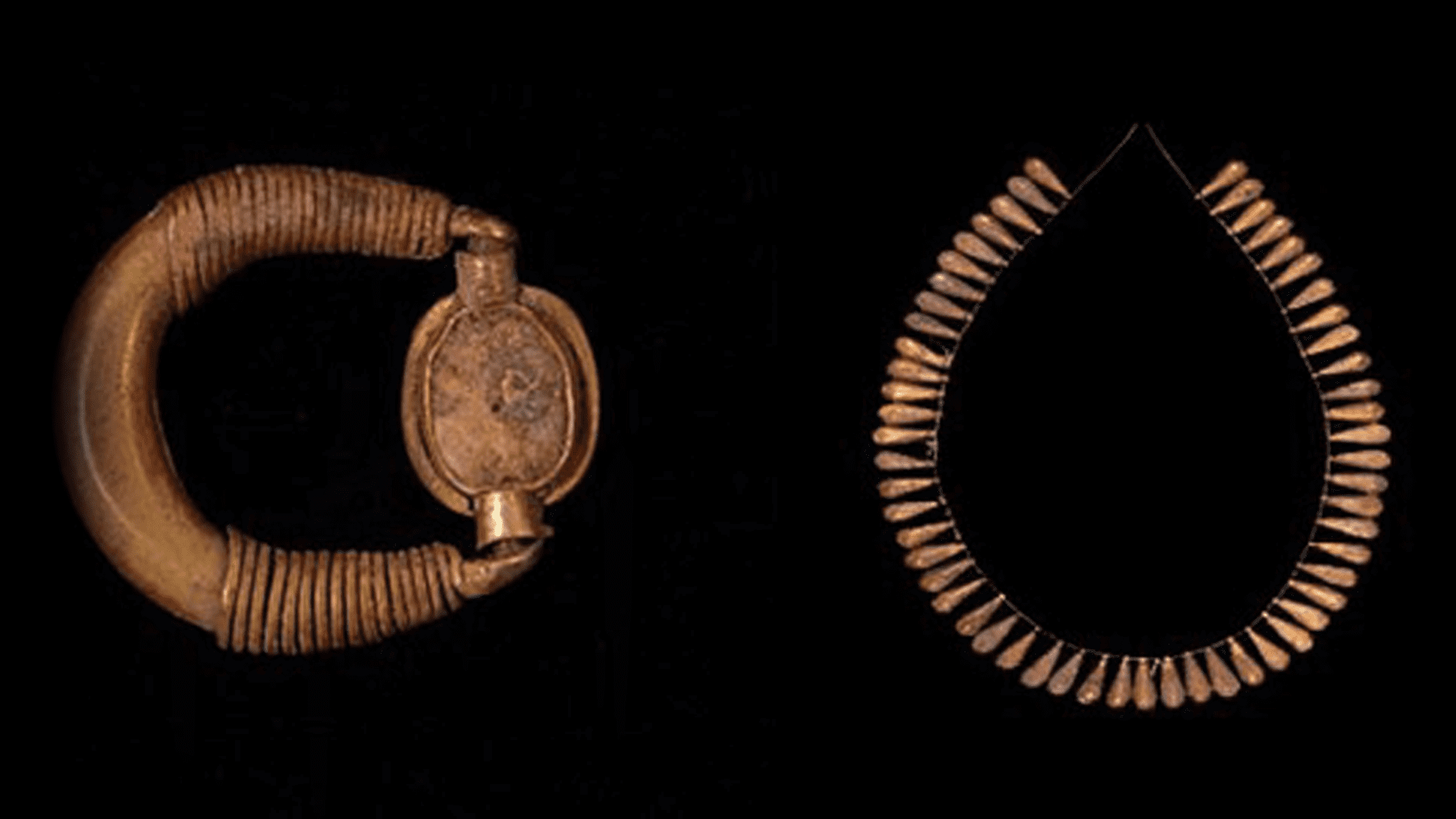Proving once again that nobody in the ancient world got blinged up quite like the Egyptians, an archeological dig in the Eighteenth Dynasty necropolis of Tell El-Amarna has turned up a treasure trove of ornate gold jewelry. Hidden for the last 3.500 years, the collection originally belonged to a young woman from the city of city of Amarna, or Akhetaten – the capital city of the controversial Pharaoh Akhenaten.
“Her burial is located at the Amarna North Desert Cemetery in the low desert west of the North Tombs,” said Anna Stevens, from the Department of Archaeology at the University of Cambridge, Heritage Daily reports.
“It includes a small number of burial shafts, tombs, and pit graves,” she added, all of which helped the team date her burial to the late 18th Dynasty – around 1550 to 1292 BCE. This is a particularly intriguing time in Egyptian history: it was the reign of Akhenaten, also known as Amenhotep IV.
While his reputation is now eclipsed in the popular imagination by his son Tutankhamun, Akhenaten was infamous in his own day. That’s because he rejected the traditional Egyptian pantheon of gods in favor of one single new deity: the sun god Aten.
“Akhenaten’s religious reforms were not entirely new, but his exclusion of the cult of other deities marks a break with traditions,” explains University College London’s Petrie Museum. “This is why he is sometimes referred to as the ‘heretic pharaoh’ and sometimes characterized as the ‘first individual in human history’.”
Tell al-Amarna, where the burial was found, was the capital of Egypt during the reign of King Akhenaten (Amenhotep IV). Image credit: Egyptian Ministry of Tourism and Antiquities
So disliked was this upheaval to Egyptian society that after Akhenaten’s death, his capital city was abandoned. The country reverted back to worshiping many gods, old temples were restored, and many of the new monuments devoted to Aten were torn down by subsequent Pharaohs.
Nevertheless, the woman’s burial in this location suggests she must have been important: her body was uncovered in the Tombs of the Nobles at Amarna, a cemetery designed for courtiers and elites of the city during its heyday.
Even more eye-catchingly, she was found with a range of gold ornaments and jewelry, including a gold necklace made of petal-shaped pendants, and three gold rings. These latter items are engraved with hieroglyphs: two are inscribed with the name “Tawi,” translating to “Lady of the Two Lands” – archeologists suggest this refers to the Upper and Lower Kingdoms which together constituted the kingdom of Egypt.
The other ring features an image of the god Bes, who, together with his feminine counterpart Beset, was worshipped as a protector of the household. He was particularly associated with mothers, children, and childbirth – a period of life that was fraught with danger at the time, and had people reaching for just about any lucky charms they could find to help them survive it.
The discovery is a result of the ongoing Amarna project, a joint venture between the Egyptian Ministry of Tourism and Antiquities and the University of Cambridge. The group has been active in the area since 2005 – though archeological interest in Amarna goes all the way back to the 18th century.
Source Link: Cache Of Gold Jewelry Found In Ancient Egyptian "Heretic" Burial
